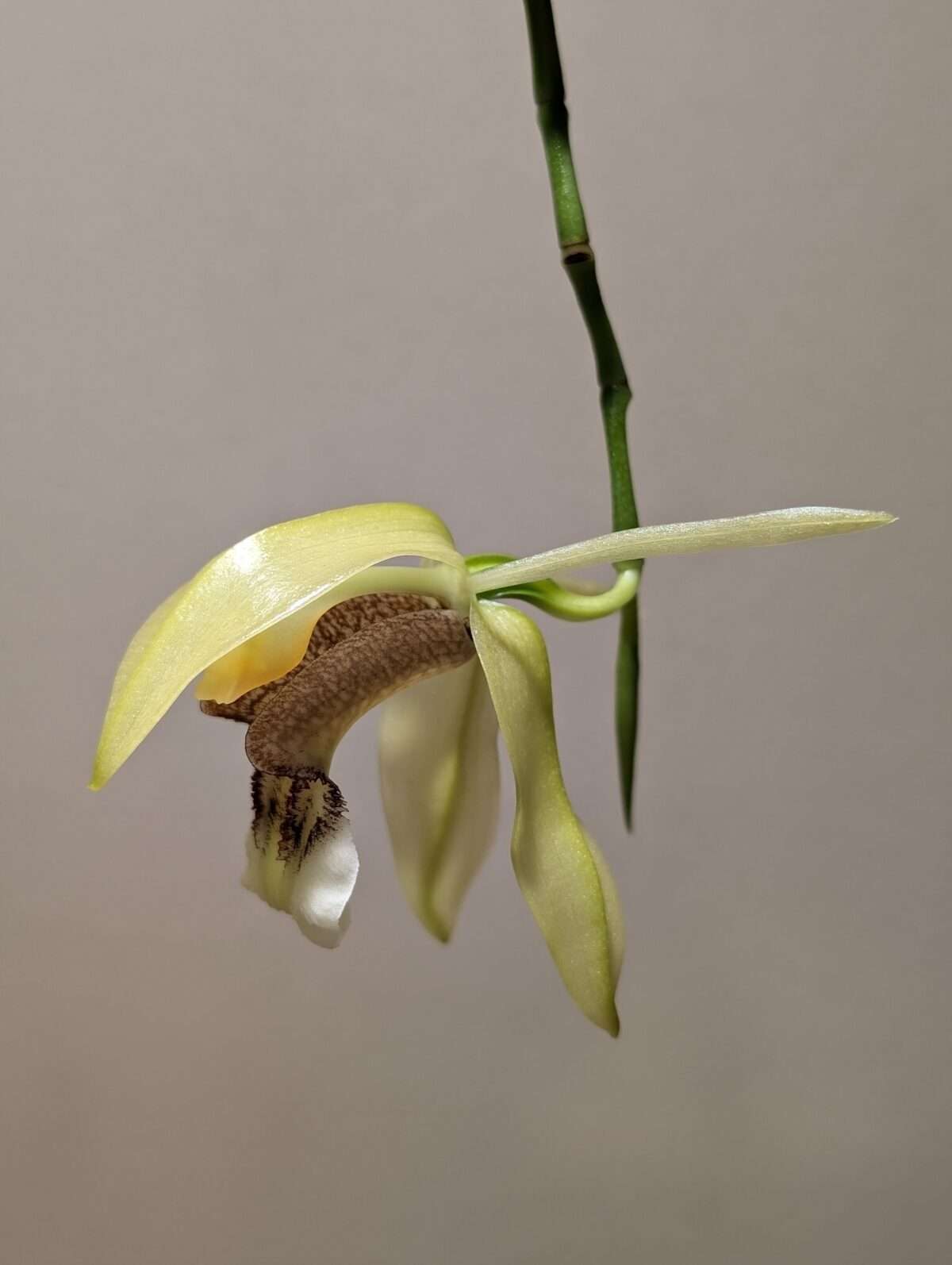Coelogyne celebensis is a lovely species to grow. Like many Coelogyne species, it isn’t easy to find which is a real shame. Overall, it resembles C. speciosa, to which it is related, but in some respects it has the advantage because on large plants it can become almost perpetually blooming. Vegetatively, the plants are very similar with a large, broad leaf atop a conical pseudobulb. The overall size of the plant is a little smaller, but it has the same clumping habit and will quite readily produce multiple growths so it bulks up quite quickly. The inflorescences emerge from new growth, just like C. speciosa, but instead of producing only one or two flowers, it continues to bloom sequentially as the pseudobulbs mature and is often still blooming when new growths are emerging, so mature plants are rarely out of flower, and then not for long. Inflorescences arch gracefully and become more pendent as they grow older but are never as droopy as C. speciosa.
This species is easy to grow. I have my mother plant in a hanging pot, and it is growing in medium bark chips. I find either medium or fine grade potting bark is appropriate for it, depending on how often you like to water. I water heavily and frequently so the plant is never dry for any extended periods of time. As with most Coelogyne, it seems better to err on the wetter side than the dryer side. When watering, make sure it is done thoroughly. Water until it is pouring out of the drainage holes. When fertilizing, I put a small amount of slow release fertilizer (I use miracle grow, there seems no need to use dedicated orchid fertilizer) on the surface and water it in. I do this twice a year. For smaller potted plants, a liquid feed may be more appropriate and practical. Average room temperature or slightly above seems to suit this species; I haven’t tried it cooler but my guess is that it will be fine down to about 12C. Give it plenty of light but avoid direct sun during summer if you rely on natural light. General rule of thumb is to give as much light as possible without burning the plants.

